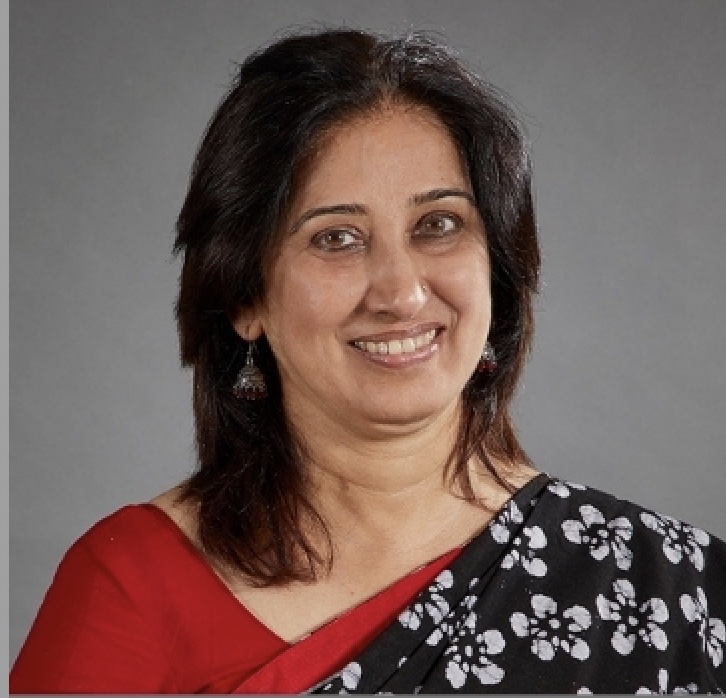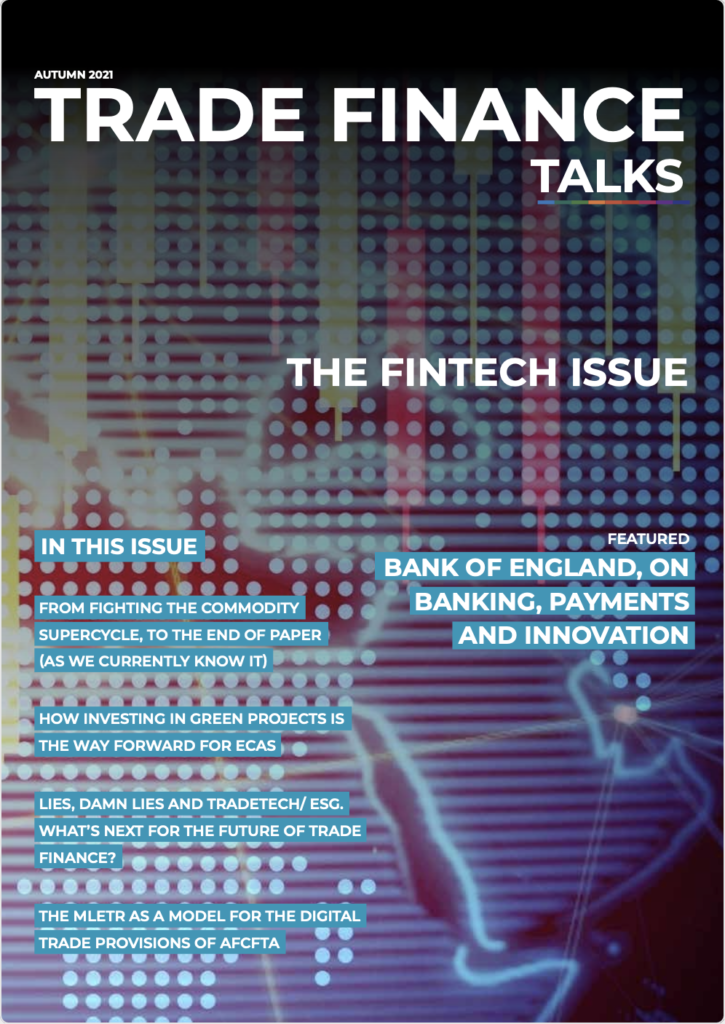MSMEs are the backbone of the economy and are fundamental to the daily provision of goods and services around the world. Despite this, MSMEs continue to face a stream of obstacles to obtain crucial financing, particularly in emerging and developed markets, such as India and Southeast Asia. TFG’s editor, Deepesh Patel, sat down with three representatives of Tinubu Square to discuss this prevalent challenge and how it is being addressed.
Featuring:
- Weiling LIN (WLN), Risk Underwriting Manager – APAC, Tinubu Square
- Gladys Tejura (GTA), Tinubu Square Representative in India, Tinubu Square
- Thomas Frossard (TFD), Head of Innovation and Surety products, Tinubu Square
Interviewed by: Deepesh Patel (DP) – Editor, Trade Finance Global
The MSME financing gap
DP: Is the MSME financing gap a recent problem? And how big is the current MSME financing gap?
TFD: The MSME Financing gap – estimated at $3-5 trillion/year – is an old problem in the industry. No viable solution has been found to tackle the issue due to the specificity of the industry. However, we know that MSMEs are essential for economic development and that they will play a crucial role in recovering from the current global crisis. Therefore, this challenge cannot go unresolved and it is crucial to continue to try to find innovative, effective solutions to this challenge.
How is MSME credit risk assessed?
DP: How is MSME credit risk assessed in your markets, what are the central sources of information, and what data is available to credit reference agencies?
TFD: We operate in two markets: Surety Bonding and Credit Insurance. The Surety Bonding market is a more classic market where the applicant must provide the information requested about the company to get approved. The Credit insurance market, however, is specific, since the challenge is not to assess the applicant but to assess the buyers, who are usually not aware that they are being assessed.
To perform this exercise, Credit Insurers usually rely on information providers such as Dun & Bradstreet, Graydon, or Bureau van Dijk, who provide company identity data and, when available, financial statements. The credit risk is then assessed based on this information.

Challenges to MSME access to finance
DP: What are the universal challenges to MSME access to finance, and what are the opportunities for MSME credit scoring/access to finance?
TFD: When it comes to MSMEs, there are challenges. Namely, that MSMEs are not required to publish their financial statements, and that in many locations their financial reporting obligations are very limited. In the case of Credit insurance, even if the buyers are asked to provide information to be assessed, many MSMEs simply do not have the information for the Insurer. This challenge exists not only in developed markets: it is even more prominent in emerging markets, as financial institutions do not possess the tools to properly assess MSME credit risk. Financial institutions could feed computer models; however, these have not been designed for them, making for an inefficient solution.
Challenges to MSME credit risk assessment
DP: What are the biggest challenges MSMEs face when it comes to assessing credit risk in your market?
Singapore
WLN: Micro, small- and medium-sized enterprises represent the majority of businesses in the APAC region. One of the key trends we find among Asian MSMEs, even in established markets like Singapore, is that some of these companies can be exempted from auditing and publishing their accounts, such as if they have annual revenue of up to SGD 5m, in the case of Singapore MSMEs. Although these small firms appear to be more efficiently organised, without the need to prepare and publish full financials like their larger counterparts, this lack of financial visibility poses one of the key challenges of assessing MSME credit risk in APAC.
Additionally, even if historical financial information can be made available, MSMEs are generally more susceptible to shocks, resulting in financial forecasts becoming more challenging. For instance, in today’s context, the COVID-19 pandemic has impacted the whole trail of the supply chain involving many MSMEs, and hence, historical financial information may not necessarily provide an accurate view on an MSME’s current and future repayment ability.

Another interesting point is the diversity of the APAC region. Very often, lenders find themselves having to call or even visit an MSME in order to obtain financial or current information on the business, which may be owned and operated by individuals speaking different languages. A credit team would, therefore, need to be made up of individuals who can read, interpret, and/or speak the local language needed to converse and understand the credit profile of the MSME, which can be a challenge to many lenders.
India
GTA: In India, MSMEs are broadly defined as businesses with annual revenue up to $35m; however, most of these businesses are very small, with nearly 95% reporting revenues of less than $15,000.
These companies can obtain finance from two sources:
- non-institutional sources – local money lenders
- institutional sources – banks, non-banking finance companies, private equity investors and other regulated entities
As per a Reserve Bank of India report, the total commercial lending exposure in India stood at $919bn as of June 2020, with MSMEs representing 25% of that exposure – roughly $232bn. This low level of lending is largely due to the fact that the majority of MSMEs tend to be small, family-owned enterprises with limited publicly available information. Additionally, these companies tend to be relatively unaware of the bank requirements, thus resulting in higher information asymmetries, impeding bank lending to the sector. In contrast, a large number of these firms depend on informal channels for their borrowings, on account of easy accessibility and availability of credit without any documentation hassles and mortgages, even though the interest rate on such loans may be very high.
It is a well-known fact that traditional lending institutions have always found it challenging to assess the credit risk of MSMEs as:
- Most MSMEs are perceived as high-risk borrowers due to insufficient assets and low capital. Most of the micro-enterprises, often not even registered, do not tend to maintain proper accounting books and are not formally covered under taxation areas. Additionally, due to heavy dependence on cash transactions, the reported data is different from actual sales figures and profitability.
- The high degree of due diligence by banks requires MSMEs to invest time and effort into the credit assessment process, resulting in high transaction costs. Furthermore, since the ticket size of MSMEs is small, they are not seen as a priority by bankers.
Credit assessments of MSMEs are done mainly through the appraisal of their collateral rather than through the assessment of their true business potential. Additionally, small business owners and startups usually do not have any valuable assets to offer as collateral, further contributing to their perception as being high risk.
The lengthy process of MSME credit risk assessment
DP: How do lenders assess MSME risk in your markets?
WLN: In Singapore, MSME credit risk is assessed by taking into account:
- business activity
- the outlook of the sector the company operates in
- its size
- credit profile
- availability of support and
- even level of commitment by its shareholders.
These can be assessed using publicly available information, such as the company’s website or local business registry, as well as basic registration information, such as paid-up capital.
Given the challenges of assessing MSME credit risk in APAC, apart from financial information, lenders also need to understand the political environment the MSME is subject to. The APAC region is particularly diverse, especially with regards to political stability and the availability of government aid for local MSMEs. Some fieldwork may also need to be done via site visits and calls in order to understand the borrower’s business in sufficient detail.
GTA: In India, in recent years there has been a paradigm shift in the MSME lending landscape. Despite a relatively small share in the commercial lending segment, the sector has witnessed an increased credit flow due to a rise in lenders, such as private banks, non-banking finance companies (NBFCs), and fintech companies. These new lenders felt it imperative to understand the customer’s needs, using techniques that involve a combination of financial assessment and personal discussions.
Additionally, government-supported measures and government/private initiatives in digitalisation have paved the way for a fresh look at assessment techniques.
Policy measures
The Indian Government introduced certain policy measures – such as demonetisation, and the introduction of a Goods & Services Tax (GST) – resulting in a significant formalisation of MSMEs. GST compelled MSMEs to register to claim tax credits while, simultaneously, creating a bank of digital data from MSMEs that is verified (invoices matched), granular (invoice-level details available), and current (monthly/quarterly filing), that is electronically accessible. Many banks have formulated GST-based programs that use GST returns as a parameter to assess borrower eligibility.
Credit rating
National Small Industries Corporation, which is intended entirely for MSMEs, in collaboration with credit rating agencies, introduced a credit rating for MSMEs. This rating, which indicates the relative level of financial strength and performance capability of an MSME compared to other MSMEs, covers credit and performance factors that measure operating, financial, business and management risks. Additionally, private rating agencies have also taken the initiative to score startups based on the assessment of the idea of the startup and its ability to convert the idea into sustainable operations.
Digitalisation
In fintechs, manual form filing is being replaced by digital data capture. Account analysis is now automated and no in-person visits are required, making the process more efficient for both lenders and borrowers. Several data points are drawn into the lending platform‘s automated underwriting mechanism, where an algorithm assesses credit risk.
Digitally available data also paints a more accurate portrait of a borrower’s creditworthiness and associated risk to generate a credit underwriting insight. With increased formalisation and digitisation, bank statements have become more granular and complete, enabling lenders to generate much more detailed insights into borrower behaviour. New sources, such as transaction data (e.g. point-of-sale credit card trails) and other surrogate data (e.g. telco, utility payments), are giving lenders an even deeper understanding.
Furthermore , as digital data is being used progressively more often through various government networks like bank accounts, GST network, Government e-Marketplace (GeMS), and the Trade Receivable e-discounting system (TReDS), future lending is expected to move away from collaterals to transactions and cashflow analytics.

The role of technology in MSME credit risk assessment
DP: Can you shine the light on any local initiatives that are driving different ways of assessing credit risk using alternate methods?
WLN: In APAC, with the technology revolution and more specifically artificial intelligence, fintech and big data companies have been able to tap into alternative data sources, such as the correlation between loss rates and company profiles and ratings, to provide lending to MSMEs that are not able to secure bank lending given their lack of complete credit information and history. Additionally, these AI models have also proven to be able to examine soft factors, such as relationships among stakeholders, and collect information available on the internet as inputs for the lending decision.
Another interesting alternative lending method is P2P lending, where apps and platforms match willing lenders and borrowers based on basic information regarding the latter’s business or products in the absence of an established track record. Whilst risky, many investors and lenders have seen good returns on these lending methods. This is due to the lending decision being an investment on the potential upside of the MSME, as opposed to a decision made on historical information that may not necessarily relate to a company’s ability to make future repayments.
GTA: In India’s local market, banks and NBFCs have made innovations, introduced products and services for their MSME customers, and are partnering with lending platforms to access new segments and benefit from the innovations in analytics and credit scoring. Cloud-based infrastructures, more data and wide dissemination of modelling techniques have allowed alternate lenders to differentiate the quality of risk assessment.
The digital intermediaries provide data on past performance and expected performance of SME partners, and the alternate lenders use the data for risk assessment and, ultimately, provide funding to the SMEs.
Some fintechs are exploring the possibility of digitising face-to-face discussions and inspection of facilities, using wide sources of alternate data, advanced algorithms and AI systems for facial recognition and object identification. However, fintechs do not stop there, as they are now also providing services, such as converting scanned financial bank statements into customised formats. These services are crucial as they are making it possible for banks to make quicker decisions by reducing the need for lengthy and complicated face-to-face interactions.
Another potential initiative is based on the hub and spoke model, where 8-10 physical branches in major commercial centres would act as hubs, and the rest of the nearby SME clusters would act as spokes.
For small-ticket deals, the entire process of customer onboarding and credit assessment would be entirely digital, with zero physical human interaction.
In the initial phase, reliance would be on public data such as Credit Information Bureau (India) Ltd (CIBIL), Permanent Account Number (PAN), GST, and social media, which is largely available to everyone. In the later stages, there is a possibility for partnerships to be established with fintech partners within the lending industry as well as with e-commerce players with large customer bases.
Using alternate data to assess risk
DP: Are there any local case studies on using alternate data to assess risk that you can share?
TFD: Alternative data must be considered in the absence of traditional financial statements. I have in mind a few initiatives which have proven to deliver results. A study from the IMF compared the approach of a fintech and the approach of a traditional lender when dealing with MSMEs in China. This study shows that an approach using more dynamic data combined with a shorter loan duration allows for better inclusion of MSMEs while maintaining underwriting discipline.
Other studies have also been conducted on the usage of mobile phone data in India and of weather data in Kenya, for instance. These studies found that this data enabled lenders to evaluate MSMEs deemed impossible to evaluate following a traditional approach.

How Tinubu Square is using World Bank Data to develop new risk scoring techniques
DP: Can you talk about how Tinubu is utilising World Bank Data to look at new risk scoring techniques?
TFD: We have started a new research program, an important part of which will be focusing on the usage of open and alternative data to create models dedicated to assessing credit risk in areas that have traditionally not been covered. The World Bank’s open data provides insights on countries, sectors and ESG, which combined with e-commerce and social media data creates an accurate picture. Furthermore, combining it with bank data and mobile phone data, means models can be built to assess MSMEs credit risk without audited financial statements by using Artificial Intelligence and Machine Learning.
However, we believe that this requires the development of an ethical approach to data management as well as giving MSMEs control over their data. Combining DLT to protect privacy with AI in this context, allows for a better, mutual understanding between borrowers, lenders and insurance providers, and is, most importantly, a promising step towards tackling the MSMEs finance gap. The emergence of these techniques also opens the way to the creation of new financial products more suited to the specific needs of MSMEs, further supporting their development.
The MSME financing gap still exists, but…
While global data, such as the one provided by the World Bank can enable the creation of new models, it is also key to localize the approach and to take advantage of specific initiatives. GST in India typically helps small businesses to avail secured loans based on their GST returns. Assessment of balance sheet or bank statements is no longer mandatory as a GST compliant MSME can avail itself of a loan within 24 hours.
However, while alternative lending methods have paved the way for MSMEs to tap into financing, these methods, just like traditional lending methods, are not fool-proof. For instance, many big data models rely on relatively limited time-series information, meaning they are unlikely to have acquired data from economic downturns. The current economic downturn caused by the Covid-19 pandemic could feed data into these models that could be seen as a disruption and negatively impact MSMEs access to finance. To prevent this from happening, the new model would likely need to acquire more data and witness more economic cycles in order to make well-informed lending decisions.
Nevertheless, MSME digitisation and readiness for digital lending as well as the industry’s views of sharing and providing access to data provides a positive, promising future for the reduction of the MSME financing gap.
About the interviewees

Weiling LIN (WLN), Risk Underwriting Manager – APAC, Tinubu Square
Weiling joined Tinubu Square Singapore in 2015 as a risk underwriter and is now leading the credit risk team in APAC since 2018.
She is well-versed with the types of credit information available in the market and is experienced in underwriting credit risks of micro-enterprises, SMEs, large enterprises and MNCs across the APAC region.
She previously served as a manager at the Enterprise Finance department of SPRING Singapore, an economic agency with the mission to develop Singapore enterprises. Weiling holds a BBA(H) from the NUS Business School.

Gladys Tejura (GTA) Representative India, Tinubu Square
Gladys joined the Tinubu Group in 2012. Based in Mumbai, she represents Tinubu across India and the neighbouring countries.
Her in-depth knowledge of the Indian market makes her a great risk analyst to help companies make the best business decisions.
Gladys started her career with Lazard Credit Capital Ltd in the corporate finance team and later moved to credit insurance. She was responsible for setting up the risk underwriting desk for the Indian operations of Atradius, Euler Hermes and Coface. Gladys holds a master’s degree in economics from Mumbai University.

Thomas Frossard (TFD), Head of Innovation and Surety products, Tinubu Square
Thomas joined Tinubu Square in 2018 to develop our surety bonding offer. He’s now also heading the Innovation LAB developing outside-the-box solutions to tackle the industry pain points, and augmenting Tinubu® Square’s competence in advanced technologies (blockchain, AI, quantum computing).
He has built an expertise in trade finance and balance sheet management as an advisor for financial institutions at CSC Peat Marwick and lead the European business analysis team dedicated to surety bonding at Atradius.
Thomas holds a master’s degree from Grenoble Ecole de Management. He also represents Tinubu® Square in various professional associations (e.g., Surety and Fidelity Association of America, International Trade and Forfaiting Association) and frequently publishes articles in specialized magazines and newspapers.
 Australia
Australia Hong Kong
Hong Kong Japan
Japan Singapore
Singapore United Arab Emirates
United Arab Emirates United States
United States France
France Germany
Germany Ireland
Ireland Netherlands
Netherlands United Kingdom
United Kingdom






























Comments are closed.